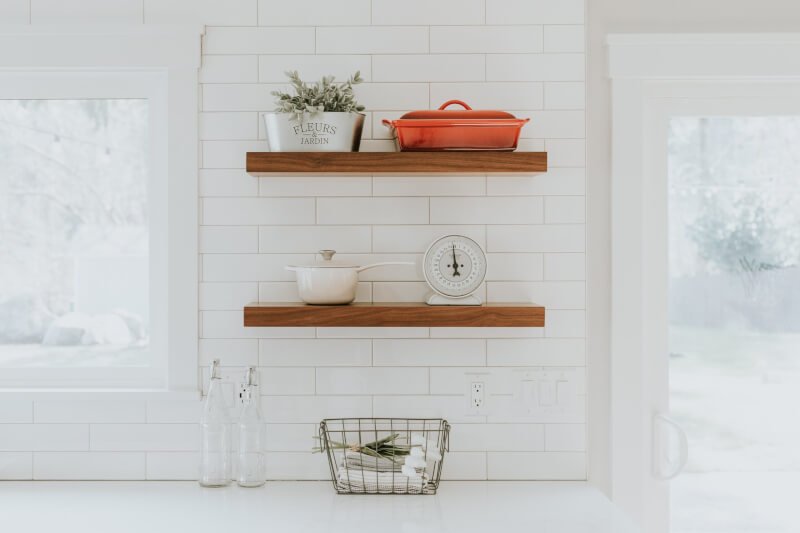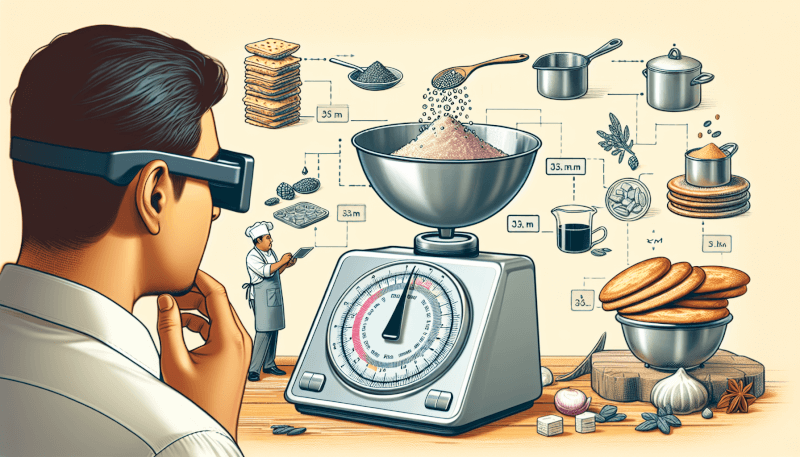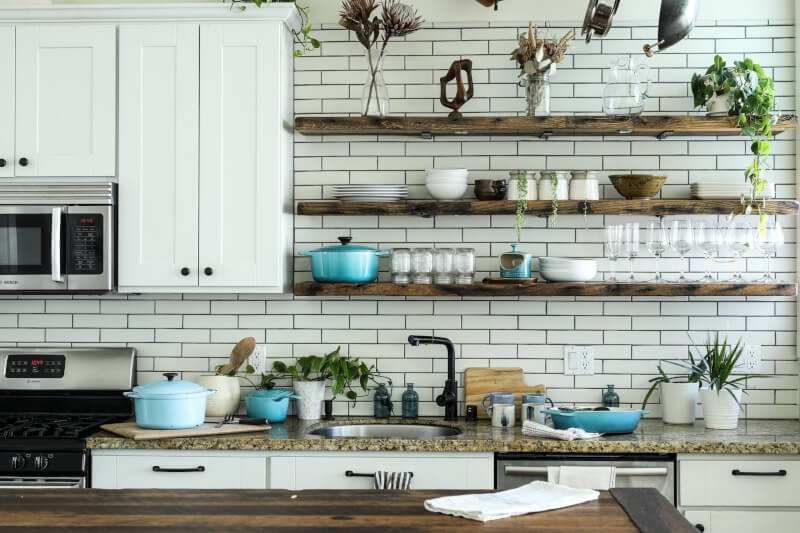In this article, you will learn how to use a kitchen scale to achieve precise measurements. Whether you are an amateur cook or a seasoned chef, having accurate measurements is crucial to ensure your recipes turn out just right. By understanding the functions and features of a kitchen scale, you will be able to weigh ingredients with ease and precision, ultimately elevating your culinary creations to a whole new level. So, let’s dive in and discover the secrets to mastering the art of using a kitchen scale for precise measurements!

Choosing the Right Kitchen Scale
When it comes to choosing the right kitchen scale, there are a few factors you should consider. First and foremost is the scale’s capacity. You want to make sure that the scale you choose can handle the amount of ingredients you typically work with. If you often find yourself measuring large quantities, it’s important to choose a scale with a higher capacity. On the other hand, if you mainly work with smaller quantities, a scale with a lower capacity should suffice.
Another important aspect to consider is the measurement units that the scale offers. Some scales allow you to measure in ounces, grams, pounds, or kilograms. It’s a good idea to choose a scale that offers the units you are most comfortable working with. This will make it easier for you to follow recipes and ensure accurate measurements.
Lastly, it’s worth looking for a kitchen scale that has a tare function. The tare function allows you to zero out the weight of a container before adding ingredients. This is particularly useful when measuring multiple ingredients in the same container, as it eliminates the need to do mental calculations or use separate containers for each ingredient.
Preparing the Scale
Once you’ve chosen the right kitchen scale, it’s important to take the necessary steps to prepare it for use. First, make sure to clean the surface of the scale. This will help ensure accurate measurements by removing any debris or residue that could affect the weight reading.
Next, place the scale on a stable and level surface. This will prevent any wobbling or tilting that could alter the measurements. A stable surface also reduces the risk of accidents, such as the scale tipping over or falling off the counter.
Finally, ensure that the scale is calibrated correctly. Many kitchen scales come with a calibration feature, which allows you to check and adjust the accuracy of the scale. Follow the manufacturer’s instructions to calibrate the scale properly. Calibrating the scale regularly will help maintain its accuracy over time.

Using the Kitchen Scale
Now that your scale is prepared, it’s time to use it for precise measurements. Begin by turning on the scale, usually done through a power button or by simply placing an object on the scale. Once the scale is on, you’re ready to start measuring.
Place a container on the scale, whether it be a bowl, a plate, or any other suitable vessel for your ingredients. Make sure the container is clean and dry to avoid affecting weight readings. Once the container is in place, press the tare button to zero the weight. This effectively subtracts the weight of the container, allowing you to measure the ingredients accurately without including the weight of the container.
With the scale tared and the container in place, slowly add the ingredient you wish to measure. The weight will be displayed on the scale, giving you an accurate measurement. Take your time and add the ingredient gradually to ensure that you don’t exceed the desired amount.
Converting Measurements
At times, you may come across a recipe that uses different measurement units than what you are familiar with. In such cases, it’s helpful to know how to convert between different units of measurement. There are a few methods you can use to make these conversions easier.
One option is to use conversion charts or online tools. These resources typically provide a comprehensive list of common conversions, allowing you to easily convert between different units. Simply input the value you want to convert and select the desired unit, and the tool will give you the converted value.
When converting between volume and weight, it’s important to note that different ingredients have different densities. This means that the weight of a certain volume of one ingredient may not be the same as another. It’s always best to consult a reliable conversion resource to ensure accuracy.
When making measurement conversions, it’s crucial to exercise caution. Make sure you understand the conversion process and double-check your calculations to avoid any errors that could alter the outcome of your recipe.

Understanding Weight Units
To use a kitchen scale effectively, it’s important to have a good understanding of weight units. The most common weight units used in cooking are ounces, grams, pounds, and kilograms.
Ounces and grams are the standard units for small measurements. While ounces are commonly used in the United States, grams are widely used in many other parts of the world. Familiarize yourself with both units to understand recipes from different sources.
Pounds and kilograms, on the other hand, are used for larger measurements. Pounds are commonly used in the United States, while kilograms are more prevalent in many other countries. Understanding the relationship between pounds and kilograms will help you navigate recipes and measurements that use these units.
Keep in mind that using a kitchen scale allows for more precise measurements, regardless of the weight unit used. This precision will ensure consistent and accurate results in your cooking and baking endeavors.
Measuring Liquid Ingredients
Measuring liquid ingredients accurately is essential in many recipes, particularly in baking. To measure liquid ingredients using a kitchen scale, you can follow these steps.
First, use a liquid measuring cup to hold the liquid you want to measure. Make sure the measuring cup is clean and dry to avoid affecting the weight reading.
Next, place the measuring cup directly on the scale. This will enable you to measure the weight of the liquid directly without any additional containers.
Before adding the liquid to the measuring cup, press the tare button on the scale to zero the weight. This will account for the weight of the measuring cup, ensuring that you only measure the weight of the liquid itself.
Once the scale is tared, slowly pour the liquid into the measuring cup. The scale will display the weight, giving you an accurate measurement. Stop pouring once you reach the desired weight, and you’re done!

Measuring Dry Ingredients
When it comes to measuring dry ingredients, precision is key. Using a kitchen scale can help you achieve precise measurements, especially for ingredients like flour, sugar, and spices. Follow these steps to measure dry ingredients accurately.
First, choose the appropriate measuring container for the ingredient you want to measure. A measuring cup or spoon is often used for dry ingredients, depending on the recipe’s instructions.
Place the container directly on the scale and press the tare button to zero the weight. This eliminates the weight of the container, allowing you to measure the dry ingredient accurately.
Add the dry ingredient gradually to the container on the scale. As you add the ingredient, the weight will be displayed on the scale, giving you an accurate measurement. Take your time and add the ingredient slowly to avoid exceeding the required amount.
Once you’ve measured the desired weight of the dry ingredient, you can proceed with your recipe, knowing that your measurements are precise.
Measuring Ingredients by Count
For certain ingredients, particularly small items like nuts, seeds, or chocolate chips, it may be more convenient to measure by count rather than weight. Here’s how you can use a kitchen scale to measure ingredients by count.
First, make sure your scale has a tare function. This will allow you to reset the weight to zero after placing a container on the scale.
Place the individual items you want to measure on the container that’s on the scale. Make sure the container is clean and dry to avoid affecting the weight reading.
Once the items are on the scale, press the tare button to zero the weight. This effectively subtracts the weight of the container, allowing you to measure the individual items accurately.
Now, add or remove items one by one, noting the weight after each addition or subtraction. This will give you the weight per item, allowing you to measure the exact number of items you need for your recipe.
Measuring by count can be especially helpful when precision is crucial, such as when making delicate pastries or when following a recipe that specifies a certain number of items.

Maintaining and Cleaning the Scale
To ensure the longevity and accuracy of your kitchen scale, it’s important to take proper care of it. Regular maintenance and cleaning will help keep your scale in excellent condition. Here are some tips to help you maintain and clean your kitchen scale.
First and foremost, remove any residue or spills immediately. Avoid allowing any substances to sit on the scale, as they can damage the surface or affect its accuracy. Wipe the scale with a dry or slightly damp cloth to remove any residue or spills.
When cleaning your scale, avoid submerging it in water or using harsh cleaning agents. Moisture or chemicals can damage the internal components of the scale, resulting in inaccurate readings or even complete malfunction. Instead, use a non-abrasive cleaning solution and a soft cloth or sponge to gently clean the surface of the scale.
Lastly, make sure to store your scale in a dry and dust-free area. Excessive moisture or exposure to dust can impact the accuracy of the scale over time. Keep your scale in a safe and dry place to maintain its functionality.
By following these maintenance and cleaning tips, you can ensure that your kitchen scale stays in optimal condition, providing you with precise measurements for years to come.
Troubleshooting Common Issues
Even with proper care, you may encounter some common issues with your kitchen scale. Here are a few troubleshooting tips to help you address these issues.
Regular calibration is essential to ensure the accuracy of your scale. Over time, the scale may drift from its original calibration. Therefore, it’s recommended to calibrate the scale regularly, according to the manufacturer’s instructions. This will ensure accurate measurements and prevent any discrepancies in your cooking or baking.
If you’re experiencing issues with your scale, such as inaccurate readings or a lack of response, it’s important to ensure that the batteries are working correctly. Check the battery compartment and replace the batteries if necessary. A fresh set of batteries can often solve many common problems.
Physical damage can also affect the performance of your kitchen scale. If you notice any cracks, chips, or other signs of damage, it’s best to contact the manufacturer or seek professional assistance. Repair or replacement may be necessary to restore the scale’s functionality.
By addressing these common issues promptly, you can continue to rely on your kitchen scale for precise measurements and achieve consistent results in your cooking and baking endeavors.
Using a kitchen scale for precise measurements may seem intimidating at first, but with practice and a little patience, it becomes an invaluable tool in the kitchen. Whether you’re baking a cake, cooking a meal, or following a specific diet plan, a kitchen scale ensures that your measurements are accurate and consistent. So go ahead, choose the right scale, prepare it properly, and start exploring the world of precise measurements in your culinary adventures. Your taste buds will thank you!


